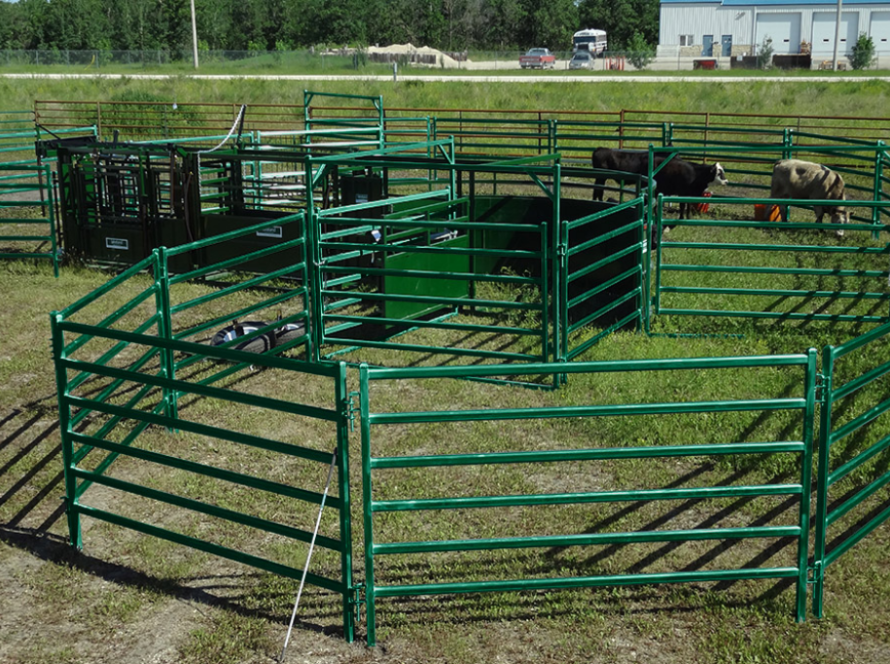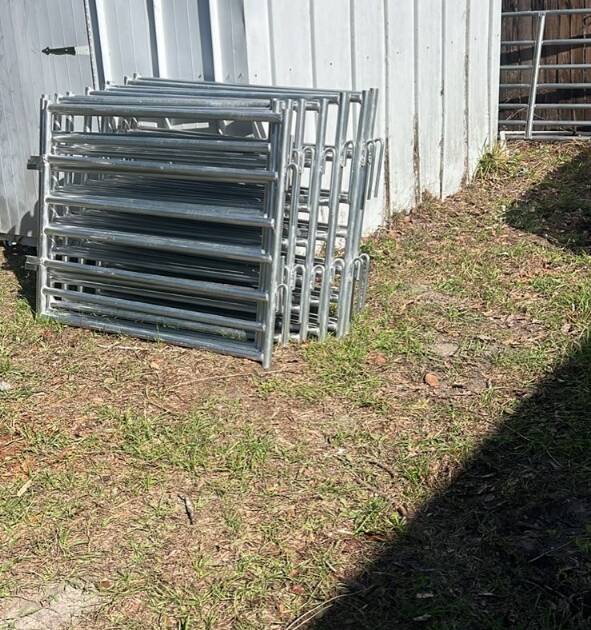Introduction
Livestock panels are essential components of any farm, providing safe and secure enclosures for your animals. However, these panels are often exposed to harsh weather conditions, including rain, snow, and extreme humidity. Over time, this exposure can lead to rust and wear, which not only compromises the structural integrity of the panels but also presents safety risks for your livestock. To prevent these issues, it’s important to choose livestock panels with high-quality coatings that protect against corrosion and ensure long-lasting durability.
Choosing the right coating for your livestock panels can make all the difference in reducing maintenance costs and extending the life of your farm infrastructure. The best coatings provide a robust shield against rust, scratches, and environmental damage, ensuring that your panels stay in good condition for years. Whether you’re working in humid conditions or an area with harsh winters, understanding the various coating options available will help you make an informed decision that suits the needs of your farm.
In this article, we’ll explore the best livestock panel coatings that prevent rust and wear, offering you solutions to keep your farm infrastructure strong, secure, and free from the damaging effects of corrosion.
1. Galvanized Coating: A Proven Solution
Why It’s Important:
Galvanized coatings are a popular and effective solution for protecting livestock panels from rust and wear. This coating involves applying a layer of zinc to steel panels, providing a durable barrier against moisture and other environmental factors that can cause rust.
What to Look For:
- Hot-Dip Galvanizing: The process of hot-dip galvanizing involves immersing steel panels in molten zinc, which creates a thick, protective layer. This coating is ideal for farms in areas with high humidity or frequent rain, as it provides long-lasting protection against corrosion.
- Corrosion Resistance: Galvanized panels are highly resistant to rust, making them suitable for outdoor use in harsh environments. The zinc layer not only prevents rust but also helps to protect the steel from physical damage, like scratches and abrasions.
- Long Lifespan: Galvanized coatings are known for their long-lasting durability, often extending the life of livestock panels by many years. This means less frequent replacement and lower maintenance costs for your farm.
2. Powder Coating: A Versatile and Durable Option
Why It’s Important:
Powder coating is another popular option for livestock panels, offering an aesthetically pleasing finish and strong protection against rust and wear. The powder is electrostatically applied to the panel and then baked in an oven to create a hard, durable surface.
What to Look For:
- Scratch and Abrasion Resistance: Powder coating creates a thick, hard surface that is highly resistant to scratching and chipping. This is particularly useful for farms where panels are subject to frequent wear and tear from livestock movement.
- UV Protection: The powder coating process also includes a layer of UV protection, which prevents the coating from fading or degrading under direct sunlight. This ensures that your livestock panels maintain their protective properties and appearance over time.
- Variety of Colors: Powder-coated panels are available in various colors, allowing you to match the aesthetic of your farm while still benefiting from the coating’s protective properties. The color options also help with visibility, making it easier to identify panels in a crowded or large area.
3. Vinyl Coating: Flexible and Weather-Resistant
Why It’s Important:
Vinyl-coated livestock panels are designed for farms that need extra flexibility and weather resistance. The vinyl coating provides a protective layer that helps prevent rust while also offering a soft, flexible surface that reduces the risk of injury to livestock.
What to Look For:
- Durability in Harsh Conditions: Vinyl coatings are highly resistant to both moisture and UV rays, making them ideal for farms in areas with fluctuating weather conditions. This coating helps protect your livestock panels from the damaging effects of rain, snow, and intense sun exposure.
- Reduced Risk of Injury: Vinyl-coated panels have a softer surface compared to galvanized or powder-coated panels, which reduces the risk of injury to your animals. Livestock are less likely to scratch or hurt themselves when coming into contact with vinyl-coated panels.
- Easy to Clean: The smooth surface of vinyl-coated panels makes them easy to clean, which is essential for maintaining hygienic conditions on your farm. Simply hose off dirt and debris to keep your panels looking and functioning at their best.
4. Electroplated Coating: Cost-Effective and Reliable
Why It’s Important:
Electroplated coatings involve applying a thin layer of zinc to livestock panels using an electrical current. This process is more cost-effective than hot-dip galvanizing and still offers some level of protection against rust and wear, making it a popular choice for farms on a budget.
What to Look For:
- Affordable Option: Electroplated coatings are less expensive than hot-dip galvanizing, making them an attractive choice for farmers looking to protect their panels without breaking the bank.
- Basic Corrosion Protection: While electroplated coatings don’t provide the same level of corrosion resistance as hot-dip galvanizing, they still offer some protection against rust, especially in areas with moderate weather conditions.
- Lightweight Panels: The electroplating process creates a thinner layer of zinc, which makes electroplated panels lighter and easier to handle during installation. However, these panels may require more maintenance and replacement over time compared to galvanized or vinyl-coated options.
5. Zinc-Aluminum Coating: Superior Protection
Why It’s Important:
Zinc-aluminum coatings combine the benefits of both zinc and aluminum to provide superior protection against rust and wear. This type of coating is ideal for farms in areas with high moisture levels or extreme weather conditions, as it offers excellent resistance to corrosion.
What to Look For:
- Better Corrosion Resistance: Zinc-aluminum coatings provide a more durable, long-lasting layer of protection compared to traditional zinc coatings. The addition of aluminum makes the coating even more resistant to rust, particularly in humid or coastal environments.
- Heat and UV Resistance: This coating also provides excellent protection against high heat and UV rays, ensuring that your livestock panels stay protected even in the harshest climates.
- Enhanced Durability: The combination of zinc and aluminum makes this coating one of the most durable options available for livestock panels. Panels with a zinc-aluminum coating can last longer, even in extreme conditions, saving you money on replacements and repairs.
6. Polyurethane Coating: High-Performance Protection
Why It’s Important:
Polyurethane coatings provide high-performance protection for livestock panels, especially in environments where panels are subject to heavy use and exposure to corrosive materials. This coating offers superior durability and protection against the elements.
What to Look For:
- Chemical Resistance: Polyurethane coatings are highly resistant to chemical exposure, making them ideal for farms that deal with agricultural chemicals, manure, or other harsh substances. This coating helps prevent corrosion caused by chemical reactions.
- Impact Resistance: Polyurethane coatings are known for their ability to resist impact damage, which is especially important for farms where panels may be subject to heavy force, such as when livestock are moving or bumping against the panels.
- Long-Term Durability: This coating is designed to last for many years, providing reliable protection against rust and wear. Polyurethane is also resistant to fading, ensuring that your panels maintain their appearance over time.
Conclusion
Choosing the right livestock panel coating is crucial to ensure long-term protection against rust and wear. Whether you opt for galvanized, powder-coated, vinyl-coated, or another option, each coating type has its unique advantages depending on your farm’s specific needs. Galvanized coatings offer proven corrosion resistance, while powder coatings provide durability and aesthetics. Vinyl coatings are ideal for softer, animal-friendly surfaces, and electroplated coatings offer a budget-friendly alternative with moderate protection.
For farms in extreme environments, zinc-aluminum or polyurethane coatings provide superior protection, ensuring your livestock panels remain strong and reliable for years to come. By investing in the best coatings for your panels, you can reduce maintenance costs, extend the life of your farm infrastructure, and create a safer, more efficient environment for your livestock.
FAQs
- What is the best coating for livestock panels in humid climates? Galvanized and zinc-aluminum coatings provide excellent corrosion resistance, making them ideal for humid environments.
- How do I know if my livestock panels need to be re-coated? If you notice rust, peeling, or wear on the surface of the panels, it may be time to re-coat them to maintain protection against the elements.
- Are vinyl-coated panels safer for livestock? Yes, vinyl-coated panels offer a softer surface that reduces the risk of injury to livestock while still providing rust protection.
- Can electroplated panels be used in extreme weather conditions? While electroplated coatings provide some corrosion protection, they are best suited for moderate weather conditions and may not perform as well in harsh climates compared to galvanized or zinc-aluminum coatings.
- How long do powder-coated panels last? Powder-coated panels are highly durable and can last many years with proper care, particularly in areas with moderate weather conditions.



